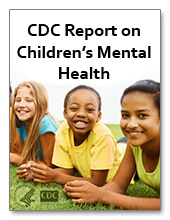Developmental Monitoring and Screening
Developmental Monitoring
Motor Delay Tool
Your child’s growth and development are kept track of through a partnership between you and your health professional. At each well-child visit the doctor looks for developmental delays or problems and talks with you about any concerns you might have. This is called developmental monitoring (or surveillance). Any problems noticed during developmental monitoring should be followed-up with developmental screening.
Children with special health care needs should have developmental monitoring and screening just like those without special needs. Monitoring healthy development means paying attention not only to symptoms related to the child’s condition, but also to the child’s physical, mental, social, and emotional well-being.
Developmental Screening
Well-child visits allow doctors and nurses to have regular contact with children to keep track of―or monitor― your child’s health and development through periodic developmental screening. Developmental screening is a short test to tell if a child is learning basic skills when he or she should, or if there are delays. Developmental screening can also be done by other professionals in health care, community, or school settings.

The doctor might ask you some questions or talk and play with the child during an examination to see how he or she plays, learns, speaks, behaves, and moves. A delay in any of these areas could be a sign of a problem.
The American Academy of Pediatrics recommends that all children be screened for developmental delays and disabilities during regular well-child doctor visits at:
- 9 months
- 18 months
- 24 or 30 months
Additional screening might be needed if a child is at high risk for developmental problems due to preterm birth, low birthweight, or other reasons.
If your child’s doctor does not routinely check your child with this type of developmental screening test, you can ask that it be done.
Why It’s Important
Fact Sheet on Developmental Monitoring and Screening
Many children with developmental delays are not being identified as early as possible. As a result, these children must wait to get the help they need to do well in social and educational settings (for example, in school).
In the United States, about 13% of children 3 to 17 years of age have a developmental or behavioral disability such as autism, intellectual disability [PDF – 289K] and attention-deficit/hyperactivity disorder (ADHD)1. In addition, many children have delays in language or other areas that can affect school readiness. However, many children with developmental disabilities are not identified before age 10,2 by which time significant delays already might have occurred and opportunities for treatment might have been missed.
Early Intervention Services
Research shows that early intervention treatment services can greatly improve a child’s development. Early intervention services help children from birth through 3 years of age (36 months) learn important skills. Services include therapy to help the child talk, walk, and interact with others.
The Individuals with Disabilities Education Act (IDEA) says that children younger than 3 years of age (36 months) who are at risk of having developmental delays, might be eligible for early intervention treatment services even if the child has not received a formal diagnosis. These services are provided through an early intervention system in each state.
In addition, treatment for particular symptoms, such as speech therapy for language delays, often does not require a formal diagnosis. Although early intervention is extremely important, intervention at any age can be helpful.
Links to Other Websites
“Learn the Signs. Act Early.” Campaign
This campaign educates parents about childhood development, including early warning signs of autism and other developmental disorders, and encourages developmental screening and intervention.
Overview of Early Intervention
Learn more about early intervention services from the Center for Parent Information and Resources.
Bright Futures
Bright Futures materials for families are available on a wide range of mental, physical, and emotional health issues for children from the prenatal months through 21 years of age.
Developmental Surveillance and Screening Guidelines
This American Academy of Pediatrics website provides guidelines on surveillance and screening.
National Association for the Education of Young Children (NAEYC)
NAEYC provides accreditation for early childhood programs that meet certain standards. You can search for an accredited program in your area. NAEYC also provides resources, tools, and information for families and childcare providers.
References
- Boulet SL, Boyle CA, Schieve LA, Health Care Use and Health and Functional Impact of Developmental Disabilities Among US Children, 1997-2005. Arch Pediatr Adolesc Med.2009;163(1):19-26
- Boyle CA, Boulet S, Schieve L, Cohen RA, Blumberg SJ, Yeargin-Allsopp M, Visser S, Kogan MD. Trends in the Prevalence of Developmental Disabilities in US Children, 1997–2008. Pediatrics. 2011, doi: 10.1542/peds.2010-2989.
- Page last reviewed: February 1, 2017
- Page last updated: February 14, 2017
- Content source:
- Division of Human Development and Disabilities, National Center on Birth Defects and Developmental Disabilities, Centers for Disease Control and Prevention



 ShareCompartir
ShareCompartir
